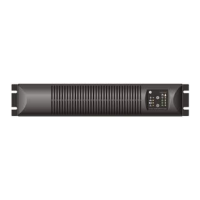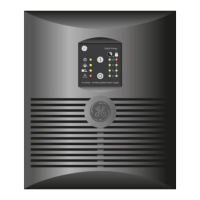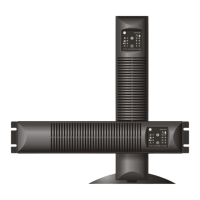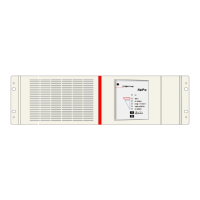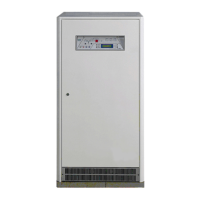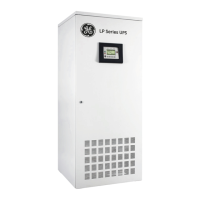Modifications reserved Page 24/25
GE_UPS_OPM_VHU_0K7_3K0_XUS_V011.docx Operating Manual VH700 UL, VH1000 UL, VH1500 UL, VH2000 UL & VH3000 UL
7 TROUBLESHOOTING
Whenever a malfunction occurs, first check external factors (e.g. connections, temperature, humidity or load) to determine
whether the problem is caused by the unit itself or by its environment. Subsequently check the thermal circuit breaker: it
may be tripped. If so: reset it (see fig. 3.4.a/b) and be sure that the UPS is not overloaded.
The following chart is a simple troubleshooting checklist only. If the suggested solution does not succeed, or if the
information is insufficient to solve the problem, please contact your dealer or consult www.gecriticalpower.com.
Thermal Circuit Breaker (TCB) tripped
Reduce load, reset TCB (2, fig. 3.4.a/b)
Contact your dealer or consult
www.gecriticalpower.com
UPS will not switch on (without using
'battery start') and the output has
been off for a few secs. (see also
4.3.4)
Read 3.6.2 Connect line cord
Dead wall socket outlet, or mains
voltage out of limits
Contact qualified electrician
Tripped Thermal Circuit Breaker
LEDs ‘operation’ and ‘alarm’ blink,
buzzer sounds 1/2 secs. UPS does
not start.
P (phase) and N (neutral) are
reversed at the UPS input in a
system with grounded Neutral.
In a system with grounded Neutral:
reverse the mains plug.
In other systems: disable the
indication. See 4.4.13 and 4.5.
In case of doubt contact a qualified
electrician.
UPS switched off automatically
Mains failure, battery discharged
Programmed shutdown in progress
The load is < 5% of the max. load
and no mains power is present.
(No-load shutdown function is active,
see 4.3.2)
LEDs ‘alarm’ and ‘on battery’ blink,
buzzer sounds 1/5 secs
Battery test just after installation or
mains failure
Allow the UPS to recharge the
batteries
Battery test shows weak battery
Have the batteries replaced
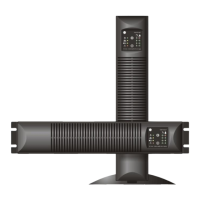
